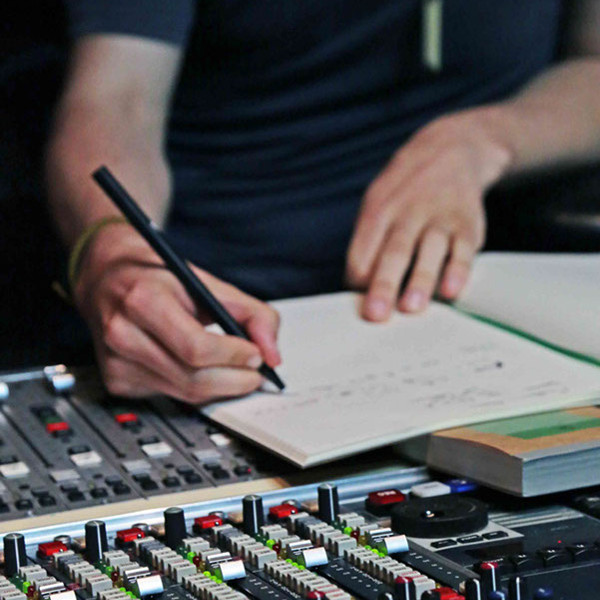Snooping Around Danny Harley’s Studio
Local musician Danny Harley of Brisbane electro-pop band Pigeon and solo project The Kite String Tangle gives us an inside glimpse at his creative process.
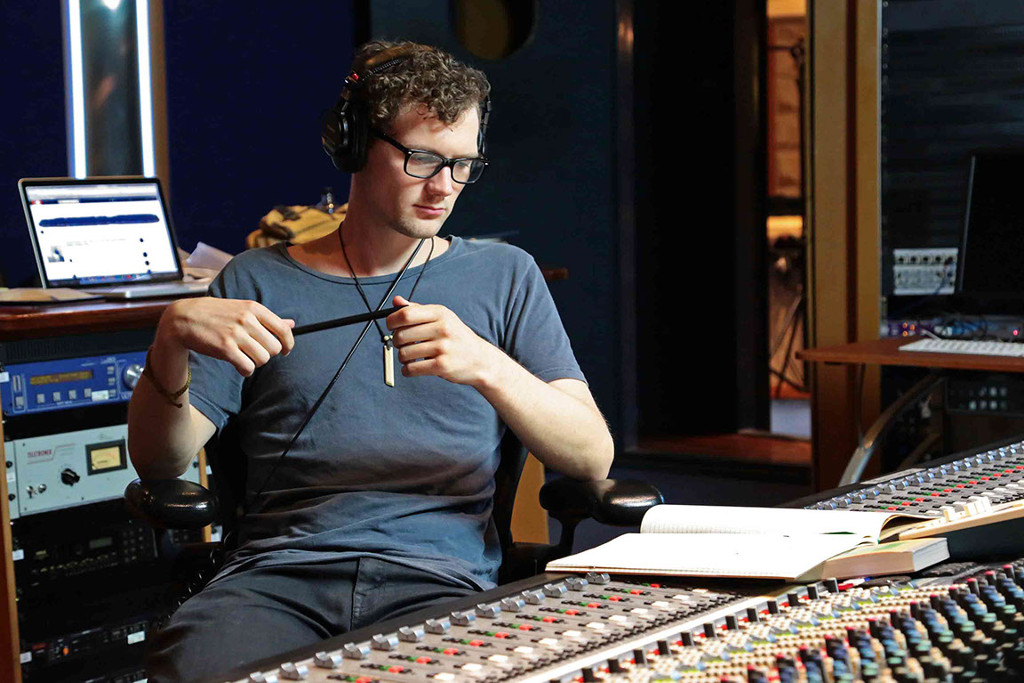

Presented by the new range X by
Presented by X, Officeworks’ new and exclusive stationery range, this is the third of a four-part series which explores the creative spaces and processes of some up-and-coming Australian influencers.
–
They don’t come much nicer than Danny Harley. Despite having already played festivals like Splendour and Parklife as part of Brisbane electro-pop band Pigeon, and recently racking up over a million listens on the Soundcloud of his personal project The Kite String Tangle, he remains one of the warmest and most humble musicians you’ll ever meet. Inspired by the moody ambient-pop of Active Child and Fever Ray, Harley’s ‘side-project’ has become a burgeoning priority of late: if you’ve been anywhere near a radio in the past six months, you’ve probably heard his single ‘Given The Chance’, an inspired mix of Weeknd-esque electronic textures and soaring vocal harmonies that’s likely to go down as one of the biggest local tracks of 2013.
We caught up with the very busy Danny off the back of his first, sold-out national tour.
–
Firstly, tell us what The Kite String Tangle means?
Danny Harley: ‘The Kite String Tangle’ was the name of an ambient project I used to have. It was a completely stripped-back kind of thing with no drums or vocals. Since then, I’ve started writing stuff that’s much more accessible, and although the music has changed the name just kind of stuck. I like the nostalgic and contemplative atmosphere of the name.
You’ve only been playing under that moniker since May 2012, in which time you’ve already clocked up one million plays on your Soundcloud. Did you stop to celebrate that milestone, or is each new success just relative to the last?
It’s been a big year of little goals and milestones. Every single one feels great and sort of like the apex of my musical career, but then something else fantastic will happen. I don’t really know when to celebrate and when not to. Instead, I just try to celebrate mildly every day.
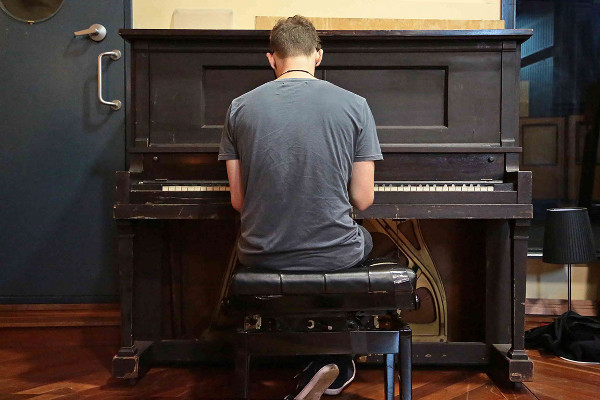
“Traditionally, I’m a guitarist, but I’ve recently been playing more and more keys and singing. Piano is more of a foreign instrument to me, so sometimes it feels easier to be creative on it.”
–
What hopes did you have for TKST when you first started, and have you exceeded any of them yet?
My hopes were fairly grounded. I started it as a side project and so it was always supposed to sort of take a back seat, but as it’s organically grown it’s become more and more important and a bigger part of my life.
You’ve been given a lot of love on Triple J. Do you think getting airplay on Triple J is the gateway to success for new Australian talent, or is it possible to get noticed without their support?
It’s definitely possible without their support. I think too many bands can get caught up in gaining the attention of Triple J, but there are so many other avenues such as blogs and community radio and college radio and different territories. Triple J is amazing and they can make a big difference, but it’s not the end of the world if you don’t get their support straight away.
Being featured on blogs played a huge part in the success of your single, ‘Given The Chance’. Was it organic, or are you quite active online in sending out links to your music to blogs and other artists?
I’m definitely active online and like to push all my new music out to my favourite blogs and friends, but it was also organic. Once a few bigger blogs had posted it, it sort of had a domino effect and got in front of more and more people and bloggers alike.
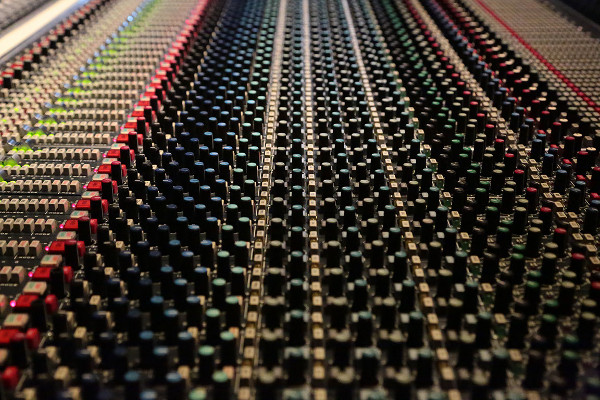
“I love electronic music because it is this limitless and evolving style of music that has a massive emphasis on texture. Something about the way you can contort things after having recorded them really just won me over.”
–
You recently said in an interview that ‘Given The Chance’ took between 50 to 100 hours of work. It really puts the creative process into perspective when you think of it as head hours, especially when you then went on to put it up on Soundcloud for free. I certainly wouldn’t do 100 hours of my job for free. What are your thoughts on people who scoff at paying for music and who think nothing of the time that went into the music they download illegally or stream for free online?
Hmmmm… Yeah, it’s an interesting topic, especially now. I think paying for music will be something that we’ll naturally see more and more of because it’s so easy to Shazam something and click ‘buy’, as opposed to waiting until you have access to a computer. At the moment, I’m happy to get my music out for free so that people will hopefully enjoy it and maybe buy an EP, album, shirt or a ticket to a show down the track.
You recently covered Lorde’s hit ‘Tennis Court’ and received a message from her producer Joel Little saying he really liked the cover. Have you received praise from anyone else unexpectedly?
I’ve had a lot of flattering interest from heavyweights in the industry, like management companies and PR firms and labels and artists. I think Joel was definitely a notable one, though.
Where does most of your work get done?
In my studio in North Brisbane called Acolyte Studios. There’s good vibes there.
–
Talk us through your creative process.
I usually start with a beat and drum production, and then layer it with bass and pads or whatever instruments I’m into at the time. Vocals are usually last and shaped by the existing vibe of the track up to that point.
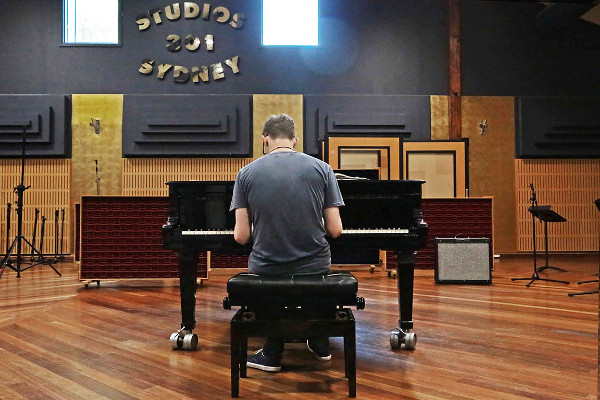
“I write and produce most of my music in my home studio, but I like to get into new spaces every now and then to keep things fresh and unfamiliar.”
–
We recently caught up with you working in 301 Studios in Sydney, which have been used for everything from the Happy Feet film score to Jay Z and Kanye’s Watch The Throne. Does that kind of history rub off on you when you’re in such an iconic creative space?
I think those kind of spaces are great for being creative. People are so conditioned to see what studios are like in movies and television, but rarely get to go in one. When you get to go in a really impressive studio, it’s always quite inspiring, especially one with such a rich history like 301.
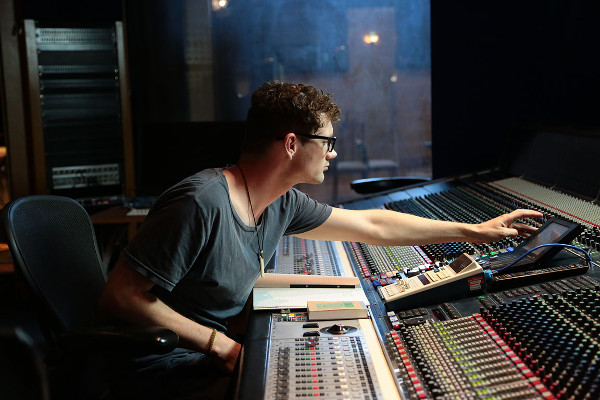
“If I could have any piece of equipment right now, I think it would be a Roland Juno synth or a prophet synth. I really want a synth right now!”
–
Are there any studios in the world you’d love to work in?
I’m not a huge gear-head so I’m not too picky about what a studio has got in it, but the more toys the better. But obviously, it would be amazing to record somewhere like Abbey Road or Electric Ladyland.
You recently told Richard Kingsmill that you ultimately want TKST to expand into a band. Is that more so for your live performances or people to bounce ideas off in the studio?
It would be to be more visual live. I come from a band background, and so when I’m on stage alone I always just feel a little stagnant and like there could be more going on around me.
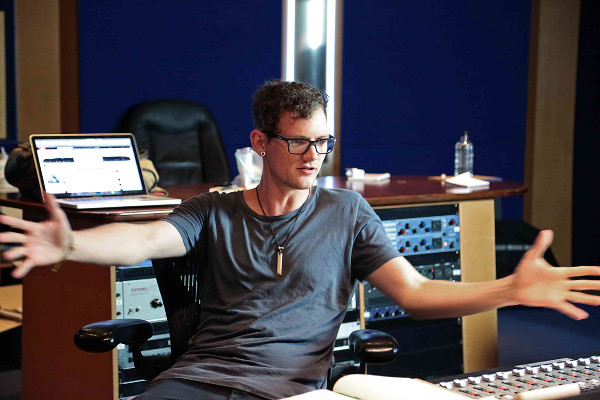
“I’m in another band, so I sort of get to experience both sides of the coin: working in a team environment and working solo. They both have massive pros and cons and offer something completely different.”
–
Aside from other music, what keeps you inspired?
Experiences, and the people around me. My friends are a constant source of interest.
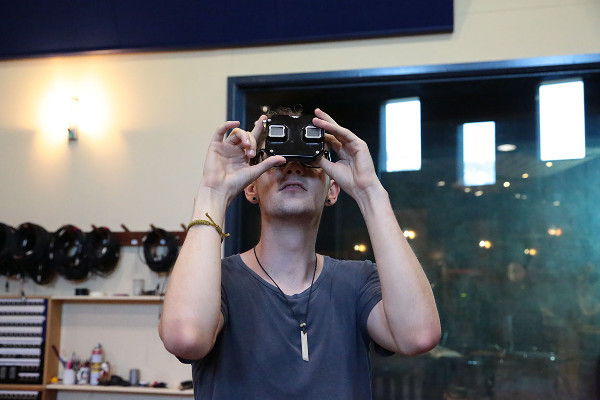
“I went through a phase of getting View-Master reels from the ’50s that had educational purposes or were from, like, the Civil War era. It lives on my bedside table.”
–
You’ve just wrapped up your first national tour. Do you have any good stories from the road?
I think I was fairly bewildered the whole time. It was so strange to be doing my first headline tour, and for it to all sell out. It’s an amazing feeling to see people singing your own songs back at you. That’s probably the highlight of my tour, the singalongs.
What’s next for TKST?
From here on in, I’m doing a month or two of writing and then I’ll be releasing my debut EP and hopefully doing more shows, festivals, tours, and making it overseas if all goes according to plan.
–
–
Melanie Mahony is the Native Editor of Junkee, and has written for inthemix, FasterLouder and Crikey. She never tweets at @melmahony
Photography by Natasha Mulhall
